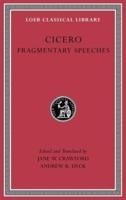Publisher's Synopsis
This work provides a comprehensive discourse-functional account of three classes of noncanonical constituent placement in English - preposing, postposing, and argument reversal - and shows how their interaction is accounted for in a principled and predictive way. In doing so, it details the variety of ways in which information can be 'given' or 'new' and shows how an understanding of this variety allows us to account for the distribution of these constructions in discourse. Moreover, the authors show that there exist broad and empirically verifiable functional correspondences within classes of syntactically similar constructions.
Relying heavily on corpus data, the authors identify three interacting dimensions along which individual constructions may vary with respect to the pragmatic constraints to which they are sensitive: old vs. new information, relative vs. absolute familiarity, and discourse- vs. hearer-familiarity. They show that preposed position is reserved for information that is linked to the prior discourse by means of a contextually licensed partially-ordered set relationship; postposed position is reserved for information that is 'new' in one of a small number of distinct senses; and argument-reversing constructions require that the information represented by the preverbal constituent be at least as familiar within the discourse as that represented by the postverbal constituent. Within each of the three classes of constructions, individual constructions vary with respect to whether they are sensitive to familiarity within the discourse or (assumed) familiarity within the hearer's knowledge store. Thus, although the individual constructions in question are subject to distinct constraints, this work provides empirical evidence for the existence of strong correlations between sentence position and information status. The final chapter presents crosslinguistic data showing that these correlations are not limited to English.











